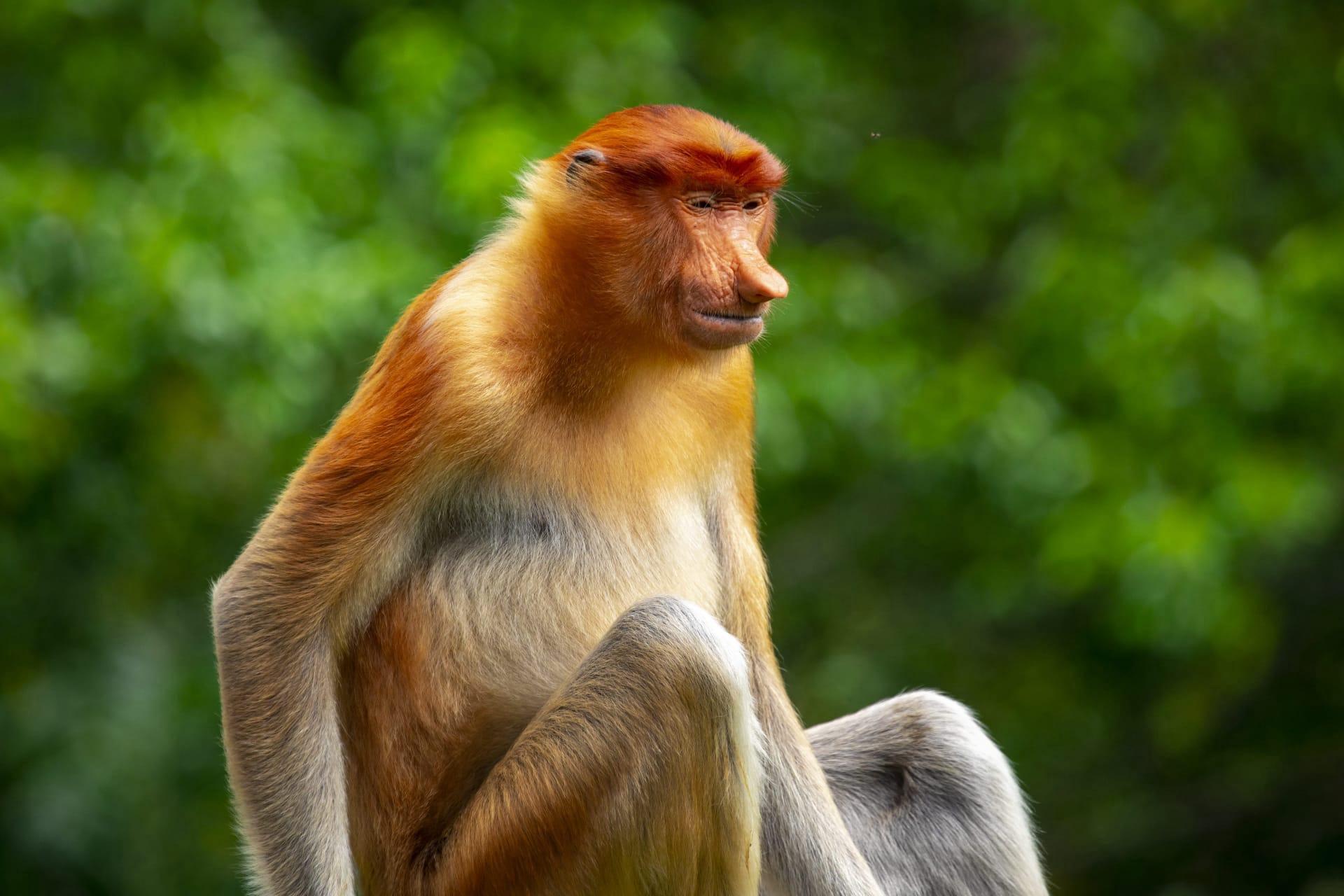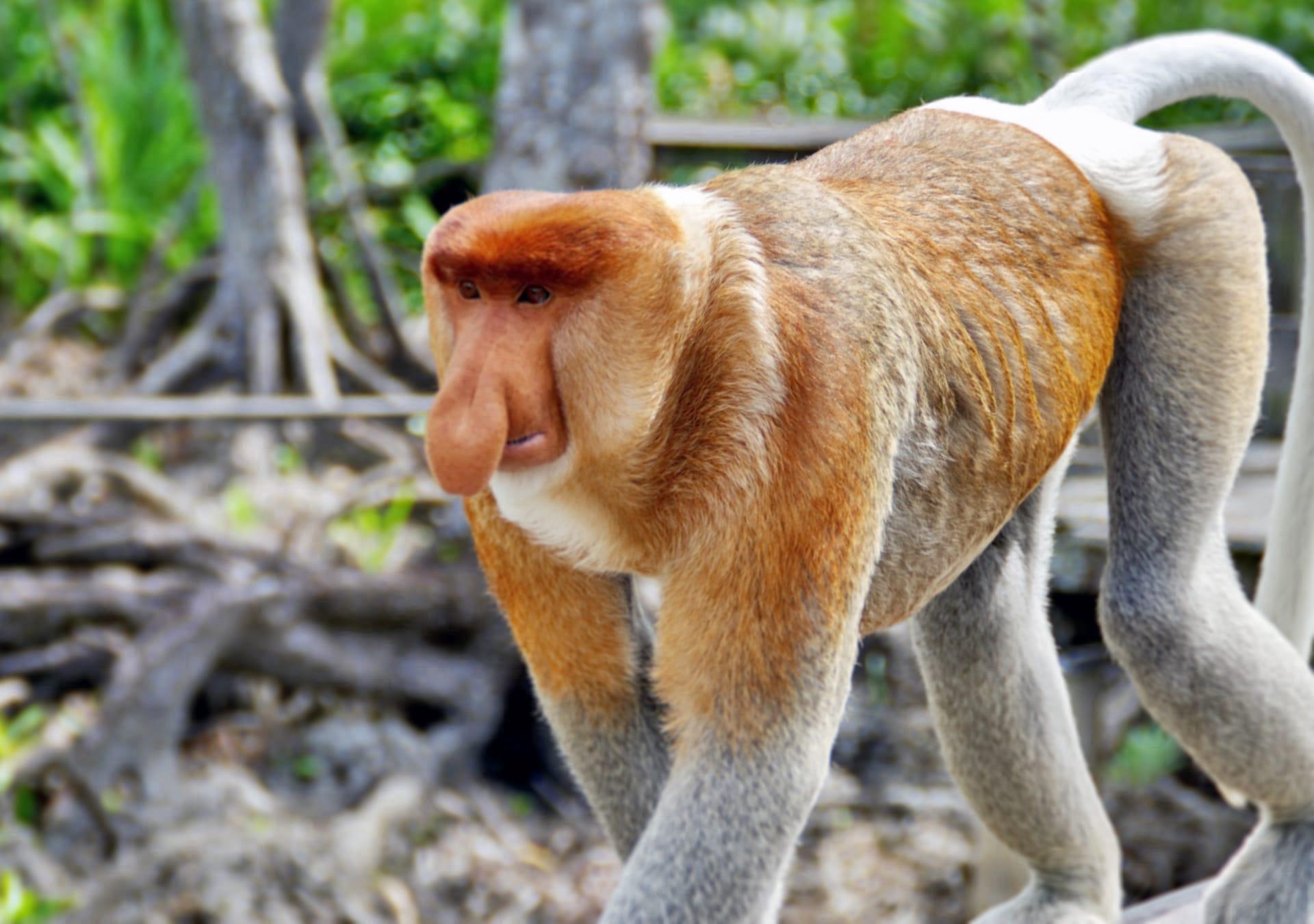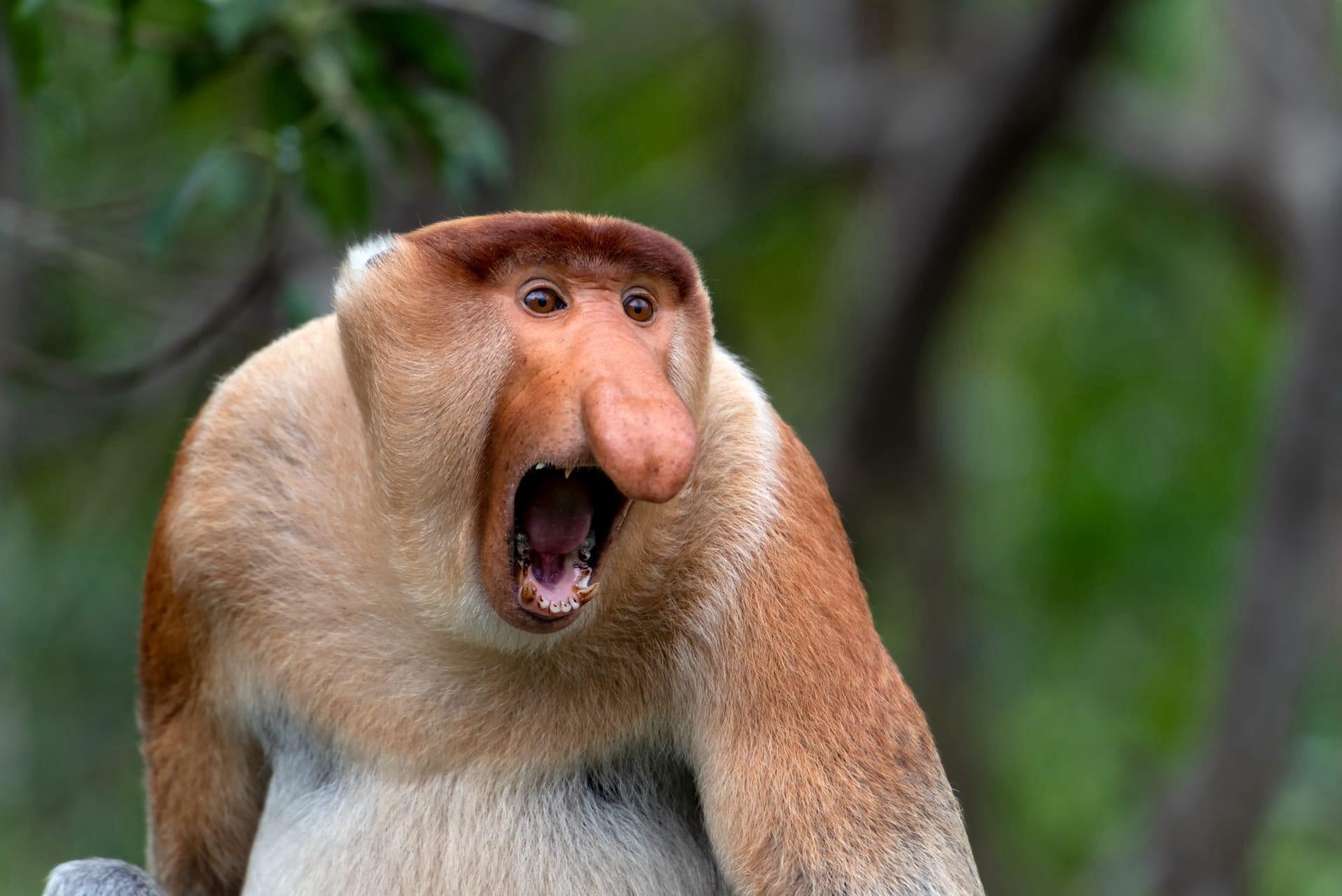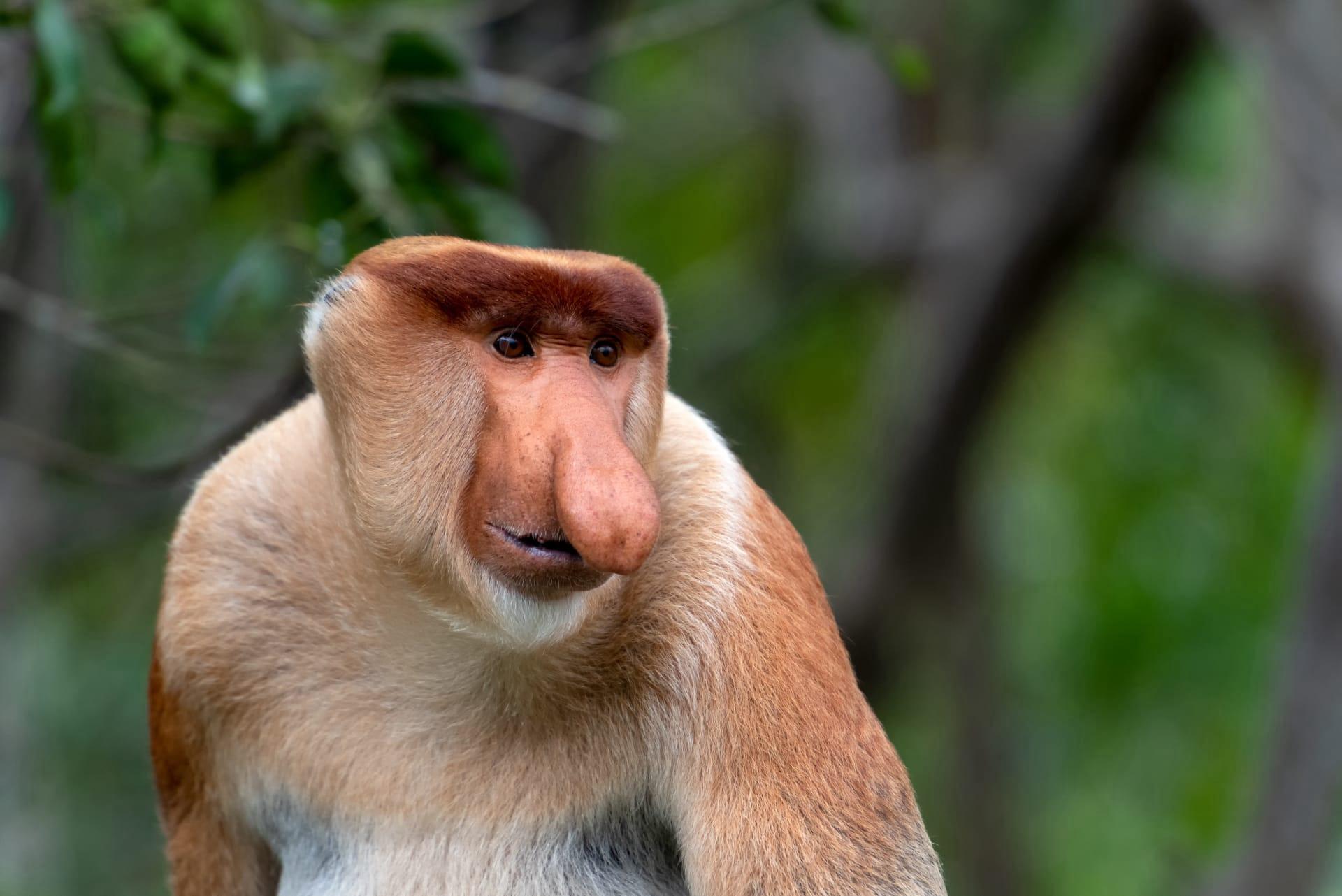1
Proboscis monkeys, known for their unusually large noses, are a marvel of nature found primarily in the mangrove forests of Borneo. These primates have noses that can grow up to 7 inches long in males, a feature that amplifies their vocalizations, essential for communication and attracting mates. Interestingly, the size of a male's nose is directly correlated with the number of females in his harem, suggesting a strong selection pressure for larger noses.
Another remarkable aspect of proboscis monkeys is their swimming prowess. They are among the few primates adept at swimming, with partially webbed feet and hands that aid in propelling them through water. These monkeys can swim up to 20 meters underwater and are often seen leaping from tree branches into rivers to escape predators or to travel.

2
Proboscis monkeys have a unique digestive system adapted to their diet, primarily consisting of leaves. They possess a multi-chambered stomach similar to that of cows, which helps in fermenting and breaking down the cellulose in leaves. This adaptation is crucial since leaves are a less nutrient-rich food source compared to fruits. The fermentation process in their stomachs often leads to bloating, giving these monkeys a distinctly pot-bellied appearance.
Their social structure is also intriguing. Proboscis monkeys live in two types of groups: harem groups and all-male bachelor groups. Harem groups consist of one dominant male and multiple females with their offspring, while bachelor groups are made up of single-sex males. This segregation is thought to reduce competition for mates and resources, thereby maintaining social harmony within the species.

3
When it comes to reproduction, proboscis monkeys have a unique approach. The females exhibit a phenomenon known as "sexual swelling," where their genital areas swell and turn a bright red color to signal fertility. This visual cue is a key factor in mating and ensures that the males can easily identify receptive females, thereby increasing reproductive success.
Proboscis monkeys are also exceptional jumpers. They are known to leap distances of up to 50 feet from tree to tree in the dense forests they inhabit. This ability is not just for navigation; it's also a defensive mechanism to escape predators like crocodiles and clouded leopards. Their powerful hind legs and long tails, which they use for balance, enable these astonishing leaps.

4
One of the most fascinating aspects of proboscis monkeys is their vocal communication. They produce a range of sounds, from honks and roars to snorts and grunts. These vocalizations are crucial for maintaining group cohesion and warning others of predators. The male's large nose acts as a resonating chamber, amplifying these sounds, which can be heard over long distances in the dense jungle.
Their diet plays a vital role in their habitat selection. Proboscis monkeys are highly selective eaters, preferring young, tender leaves, which are easier to digest and more nutritious. This dietary preference influences their movement patterns, as they travel daily to find suitable feeding spots. Their reliance on specific types of vegetation makes them important seed dispersers, contributing to the health and diversity of their ecosystem.

5
Interestingly, proboscis monkeys have a specific resting period during the day. Post feeding in the morning, they spend midday resting and digesting their food, a behavior known as "foregut fermentation." This rest period is vital for their health as it allows the slow digestion process of leaves to occur efficiently, crucial for extracting the maximum nutrients.
The conservation status of proboscis monkeys is a cause for concern. Listed as an endangered species, their population is declining due to habitat loss from deforestation and human encroachment. Conservation efforts are focused on preserving their natural habitat and raising awareness about the importance of these unique primates. Their role as a keystone species in the Borneo ecosystems highlights the need for urgent conservation actions to ensure their survival.